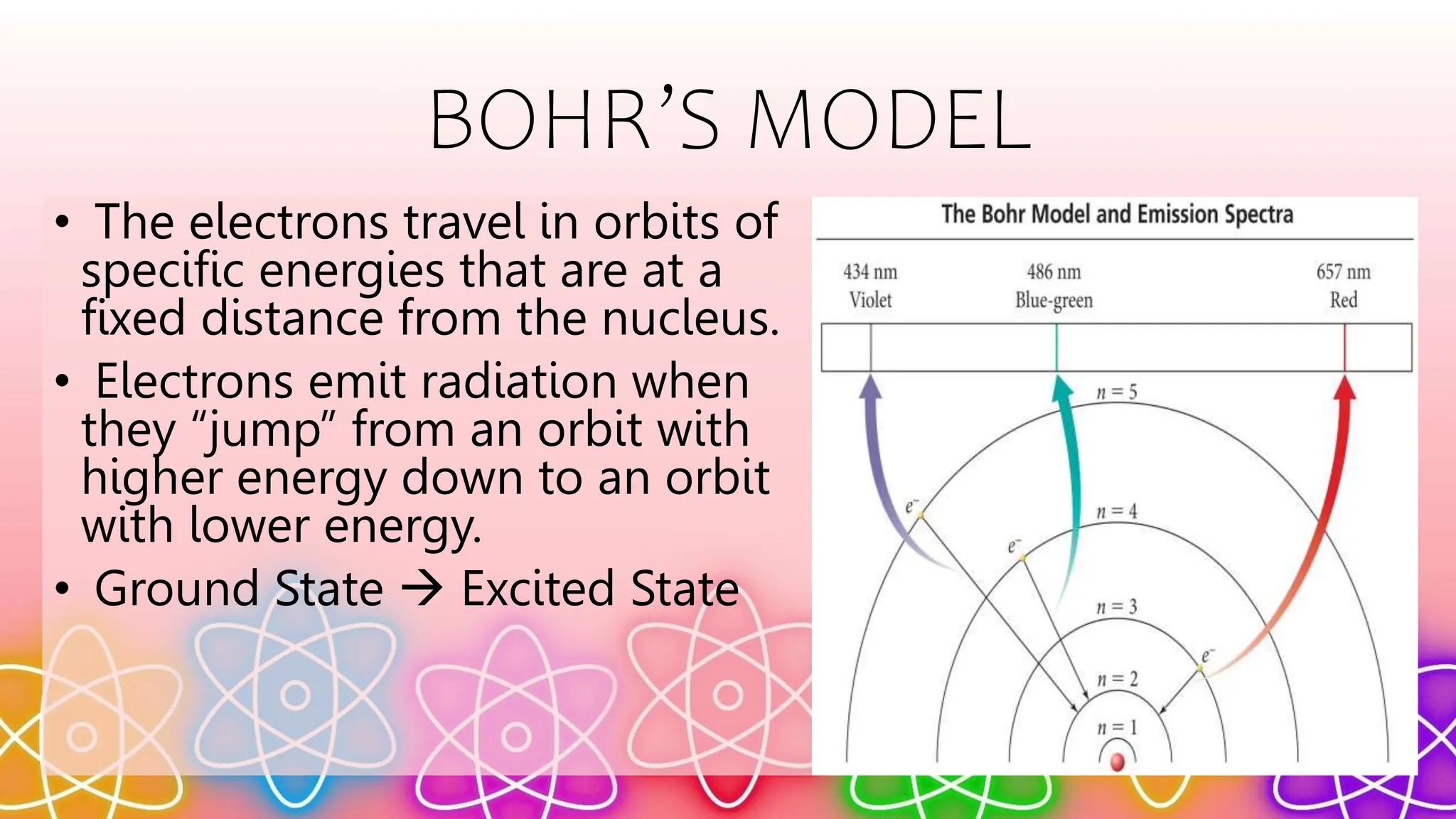This document provides an overview of the development of quantum theory models of the atom, including Rutherford's nuclear model, Bohr's model, de Broglie's proposal of the wave-like nature of electrons, Heisenberg's uncertainty principle, Schrodinger's equation, and the quantum numbers used to describe electron configuration. It introduces concepts like atomic orbitals, the Pauli exclusion principle, Hund's rule, and the Aufbau principle for building up electron configurations. Examples are provided to illustrate how to write electron configurations using quantum numbers and determine whether elements follow diamagnetism, paramagnetism, or the Pauli exclusion principle.





































